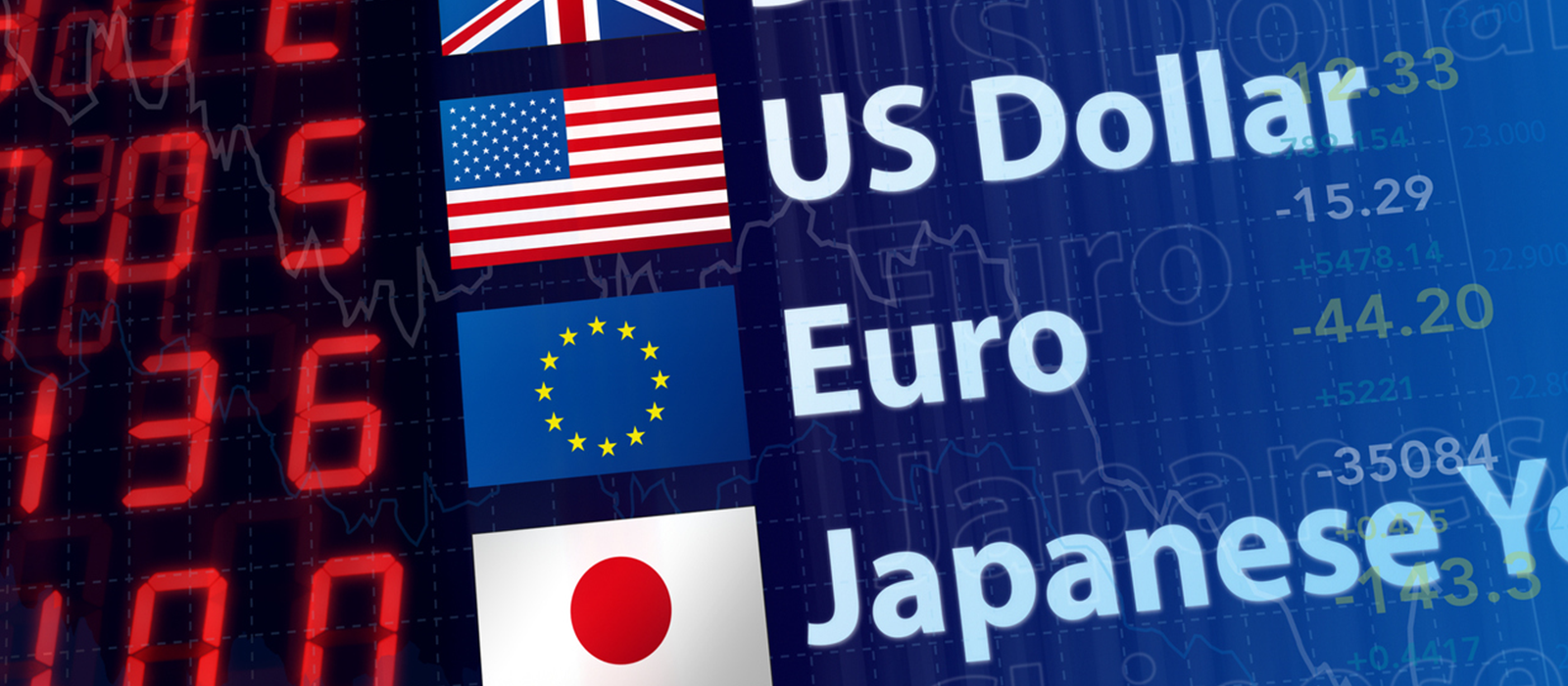
Geopolitical shocks and currencies
How Russia-Ukraine and other geopolitical events impact markets
March 2022
At the time of writing, tensions between Russia and Ukraine had bubbled over into real conflict, with Russian troops advancing on Ukraine’s major cities on February 24.
When major geopolitical tensions emerge, FX markets are impacted. Although the issues can be wide-ranging, from trade wars, to changes in political leadership and pandemics, the resulting volatility in currency markets often follows broad trends. Here, we explain how the situation in Russia-Ukraine fits with this playbook.
Conflict in Ukraine triggers financial fallout
In response to recent aggressions against Ukraine, a number of world leaders from a growing number of countries including the US, Australia, Japan and UK have applied sanctions on Russia to exert political and financial pressure.
By the end of February, the global payments messaging system, SWIFT, which banks use to transact internationally had been cut off to a number of Russian banks, and crucially the Russian central bank, meaning hundreds of billions of dollars of foreign reserves are now inaccessible.1
Europe has severed ties with some Russian energy suppliers — Germany halted approval of the soon-to-be opened Nord Stream 2 gas pipeline from Russia on February 24, and Finnish and Swedish refiners have suspended purchases of Russian oil.2 Perhaps as importantly, oil traders are shunning highly discounted Russian crude for fear of not being able to transact due to payment sanctions, and are instead opting to buy Middle Eastern crude at inflated prices.
These developments, among others, have massive ramifications for the global economy, and because of this environment of uncertainty, investors are looking to preserve capital in safe markets.
What we’re seeing:
- Gold, the US dollar and Government bonds are rising with demand for safe-haven assets
- The rapid depreciation of the Russian ruble, falling to record lows against the US dollar
- Sharp losses in equity markets, especially in Germany
- A sell off of emerging market currencies, such as South African Rand and Turkish Lira
- So-called commodity currencies (a proxy for demand for major investments) like the Australian dollar have also been under pressure
- Surging crude oil prices, as markets digest the possibility that a key source of global energy will be restricted
The situation is unfolding rapidly, meaning uncertainty is the key theme in markets right now.
Why geopolitical events move markets
Markets hate uncertainty. Some traders like some volatility — enough to make a few percent here or there — but overall the big players put a lot of time and effort into building financial models with mostly predictable inputs like a country’s growth rate, inflation settings, and for equity markets, consumer trends, a company’s capital investments etc.
All financial models factor in a bit of risk in case they missed something in their assumptions, or some unforeseen event occurs, but major conflagrations are a different story. Events like global conflict are very difficult to model, certainly in the short term as things move so quickly. This can force investors to make the difficult call to hold onto a position and hope that things settle down, or take early losses before markets fall further.
Generally, once broad-based selling occurs, the herd mentality common to markets takes effect and the financial impact can be pronounced.
For example, in June 2016, when the UK voted on leaving the EU, the pound saw an unprecedented drop in value as soon as it became clear that the ‘leave’ campaign had won. The currency plummeted from a high of 1.50 USD to under 1.33 USD, dropping more than 10% in just one day. Shockwaves reverberated around the global economy, with huge sell offs across global equity markets and risk assets, based on the uncertainty of the shift in geopolitical order.

Sharp, and mostly short
In the midst of a crisis, it can feel like the beginning of a long, drawn out period of volatility. It’s human nature to forget the lessons of the past and place more emphasis on the present.
But in reality, the time between a crisis and its nadir from an investment perspective is usually relatively short.
With a bias towards negative news, markets will always be watching for geopolitical situations that might escalate, and even if they come to nothing, the perceived risk could still impact a country’s currency.
For example, during the final round of the French election in 2017, right-wing candidate Marine Le Pen wanted to abandon the euro and return to the franc. Despite the fact she was an outside chance to win, this was enough to make markets nervous based on the potential blow to the cohesion of the European Union and greater geopolitical uncertainty. However, when pro-euro Macron was confirmed as the winner, investor confidence returned and the euro swiftly recovered its losses in a relief rally, reaching 6 month highs against USD, and then going on to gain around 10% in the 4 months following.
When uncertainty is resolved quickly, geopolitical events can end up being just a blip and can have little bearing on a currency. However, if uncertainty is drawn out, this can lead to extended periods of downward pressure.
In the case of Brexit, after the shock of the initial vote shook markets, the geopolitical tensions and uncertainty around trade deals was drawn out over three and a half years. During that time headlines around negotiation sticking points and missed deadlines created bursts of volatility and downward pressure on the pound. Eventually, once the final deal was struck at the end of 2019 a rally saw the pound recoup some of its losses.
Safe havens in times of volatility
There is a fairly well-established playbook when major shocks occur to financial markets. Equity markets are the first to fall, as investment managers convert their shares to cash. This was apparent in February, as investors began selling off equities in response to the risk of aggression by Russia against Ukraine.
Generally, once broad-based selling occurs, the herd mentality takes effect and the financial impact can be pronounced.
–
After an equity sell-off that cash has to go somewhere rather than earn zero returns sitting in bank accounts, and it usually goes to bonds in countries with a high degree of financial stability. This is when currency markets start to experience volatility.
The USA, with its deep and liquid financial markets, is one such haven, Switzerland and Japan, which also have strong financial foundations, as well as very stable political systems, are other countries to park money in times of crisis. So, during times of shock it’s typical to see the US dollar, Swiss franc and Japanese yen appreciate.
Gold has also been a traditional safe haven investment, so it is common to also see gold prices spike in an emergency. Depending on how high the gold price goes, that can also have a appreciative effect on the currencies of the countries that produce it.3
Emerging market currencies tend to perform poorly during shocks, as they are highly dependent on global growth to support their economies. In times of crisis, people are likely to rethink major purchases, or make major investments which means manufacturing-oriented countries, like those in Southeast Asia, can see currency losses.
So-called commodity currencies, like the Australian dollar or the Canadian dollar may also be sold off as those countries produce the raw materials e.g., iron ore or oil, that are the building blocks of construction, manufacturing and transport.
What it means
We’ve already seen key parts of the playbook unfold. Initial ripples in equity markets spilled over into currency and other financial markets once the invasion of Ukraine was no longer just a risk but an actuality.
Uncertainty is the key theme in markets right now.
–
Safe haven assets like gold and the US dollar are up, while emerging/commodity currencies are down.
But there are also country specific issues at play here. Primary among them is the price of oil (and gas). The restriction of Russian energy exports pushed the oil price to its highest level since 2014, over $110 a barrel, (although it was heading upwards before the conflict started), potentially damaging the global recovery.
So far neither Europe or the US have completely banned imports of oil and gas, recognising that it would cause almost as much economic hardship on themselves as on Russia.4 If the conflict does not end soon, however, Ukraine’s biggest allies may be forced to take that step. That could send global growth backwards as the price skyrockets.
Up until now, post-pandemic inflation was the greatest concern for investors, and central banks have been messaging that interest rates will need to rise to keep inflation under control. Should central banks pump the brakes on monetary policy tightening and stall or downgrade expected rate hikes due to geopolitical uncertainty, this has the potential to cause volatility in currencies.
Any news that points to a resolution could give investors confidence and trigger a correction from ‘risk-off’ environment but for now most players are playing it safe — in safe havens — as this situation unfolds.
References
1. https://www.theaustralian.com.au/business/financial-services/swift-cut-banks-at-heart-of-new-ukraine-battleground/news-story/e3c38be790e0f1fb8d3f597bfd62557c
2. https://www.nytimes.com/2022/03/01/business/energy-environment/russia-oil-price.html
3. https://espace.curtin.edu.au/handle/20.500.11937/43332
4. https://www.bloomberg.com/opinion/articles/2022-02-23/commodities-aren-t-being-weaponized-in-confrontation-over-ukraine-for-now?sref=wOrDP8KX
Download the OFX Currency Outlook
Learn more in the latest edition of the OFX Currency Outlook. It’s been produced to help you navigate market movements today, and to understand what to watch out for in the coming months.